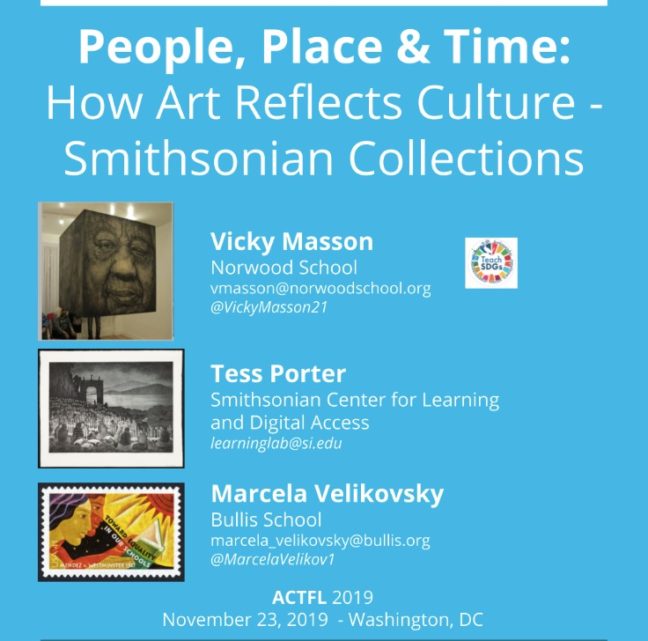by Vicky Masson
“Museums Alive” is a column of Language Teaching Lab that aims to connect the authentic resources of museums, art galleries, and other collections to the teaching and learning of World Languages.
Why authentic resources
Authentic resources in World Language such as art and artifacts help explain and understand the people that created and used them, its history, and its culture. They tell stories, are springboards for deeper learning, and leave memorable impressions to those who come in contact with them. Also, they open our minds to new perspectives and make it easier to relate to different points of view.
What is the Smithsonian Learning Lab
The Smithsonian Learning Lab (SLL) is a platform that connects the millions of objects that belong to the Smithsonian institution to anyone in any part of the world who has internet access. The SLL helps you find digital resources, create content using online tools, and share them with the world.
Why use the Smithsonian Learning Lab in a World Language Class
What a better way of learning a language than using the authentic resources from the SLL! The platform has millions of authentic resources at our disposal. The SLL collection that my colleague and I created, “Using Authentic Resources,” can give you ideas on what type of art and artifacts to choose and how to include them in the World Language class.
How we Teach with the SLL: PZ Thinking Routines, SDGs, and EdTech Tools
Creating a collection with the SLL allows you to have all that you need accessible in one place. Most importantly for teachers to consider is how you present the unit for student learning. All while, they use EdTech tools for a purpose: from Flipgrid to EdPuzzle to Teams or Google Docs. The SLL allows you to create collections with interdisciplinary connections.
The collection “People, Place, & Time was presented at the American Council on the Teaching of Foreign Language Conference 2019.” It explores how integrating museum resources, Global Thinking Routines, and the Sustainable Development Goals can help students understand who the people are, when and where they live, and what they do. In the collection teachers will find guiding questions to help with lesson planning, presentation slides, museum resources, examples of student work, and links to the three case-study collections.
The case-study collections are:
- Night of the Dead by Alan Crane,
- Caja De Memoria Viva II: Constancia Colón de Clemente by Adrián Román
- Méndez v. Westminster 1947.
How to use the SLL
 Using the SLL is quite simple. In the following GWATFL TIPS video, “Introduction to the Smithsonian Learning Lab,” Tess Porter, Digital Content Producer at the Smithsonian Center for Learning and Digital Access, explains how to use the SLL. Follow her tips and in no time you will have your own collection to use with your students. |
Developing Global Competence
Our aim is to develop globally competent students. We recorded a Webinar and wrote an article on Developing Global Competence in the World Language Classroom using these collections. Review them if you need more details and ideas on how to do it.
In short, using authentic resources helps develop global competence and prepares students to communicate and interact in the world. It helps our students move beyond their inner circle and familiar contexts to understand people from different cultures with different points of view.
Using the SLL digital resources combined with Project Zero Thinking Routines and relating what we teach to the Sustainable Development Goals connect students with real-world global issues, all while raising empathy and curiosity.
How do you teach for Global Competence with Authentic Resources? How would you use the Smithsonian Learning Lab in your teaching?


